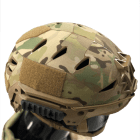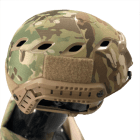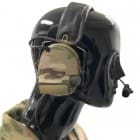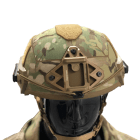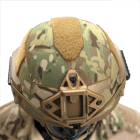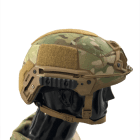Lately there has been quite a bit of talk about the connection between history, professional military education and quality training on this site. Perhaps we can all initially agree on a couple of facts to frame some additional discussion. First, war is a bloody art form much more than it is a science and requires continuous study and practice to truly master even at the tactical level. Second, planning, managing and conducting good training is also an art – and in many ways is just as hard to master. For the sake of brevity, I am going to address training separately in part two of this article so that we can concentrate on history as a component of professional education up front.

So how can studying history help make you a better soldier and build stronger units? To be sure there is an important caveat; any “lessons” gleaned from history cannot and will not give definitive answers to today’s military questions. The past is not some accurate predictive tool that can somehow be used to prophesize future outcomes. Nevertheless, the study of history certainly often provides valuable context that can and does serve to inform decision makers in the present. Therefore, it is safe to say that seeking to understand events and characters in history does indeed teach and enlighten.
Obviously countless others have had a similar opinion about the enormous utility of historical study. I do not think it is an exaggeration to say that a great many notable historical figures have been self-acknowledged students of history. That has certainly been true of military leaders. Roman generals like Caesar studied the writings of the ancient Greek warriors intently. Not just to learn how they fought, but also how they successfully trained, motivated and sustained those earlier formidable armies. Later others studied Caesar’s campaigns to capture his insight into war. Each generation in turn contributing and perpetuating an unbroken military historiographic circle of life.
We now live in a golden age of information. I have more educationally sound books about all aspects of warfare throughout history sitting on the shelves in my home than were ever available to any general in WWII. Moreover, my collection is extremely modest compared to the exponentially greater volume of material accessible through any modern digitally empowered library. It would be a shame – really a crime – if those of us with that kind of fingertip access to vast reservoirs of information did not take full advantage of all of that educational abundance.
Based on my own personal experiences, I have always been able to learn a great deal about my profession from men and women who died long ago. Military philosophers and theorists like Clausewitz still speak to me. Over time I internalized his concepts, Sun Tzu’s teachings and Machiavelli’s advice and was no doubt the better soldier, trainer and leader for having done so. For me, reading “Lee’s Lieutenant’s” and “This Kind of War” or “The Uncertain Trumpet” was never some academic exercise that was not destined to serve any practical purpose. I learned to appreciate history from the example set by the leaders I met early in my career. In turn, I have tried to pass on that historical sensibility to those I have had the privilege to serve with, lead, and mentor over the years.
In fact, studying books like those above was vital to my vocational education and eventually critical to whatever success or failure I might achieve while practicing my profession. Most importantly, I was able to make better and timelier decisions in ambiguous and challenging circumstances than I would have if I had not had that reasonably broad and sufficiently deep historical exposure beforehand. I simply would not have full confidence in any senior military leader who had no informed sense of history.
To be clear, I am not talking about a formal educational or degree producing program. No one needs to run off and get a PhD in Military History in order to be a good soldier or capable leader. Indeed, we can start at the small unit level with resources we already have readily available. How many leaders out there have made the effort to teach their subordinates their unit’s unique history – let alone the Army’s service history? I can tell you that the answer is not enough. What campaign streamers do you display on your colors? What battles do the elements of your unit crest represent? Why is your unit called the Manchus or Cotton Balers or Devils in Baggy Pants. Of course you might ask, is that “minutiae” really truly important to know? How will that information help “kill the enemy” or keep my people alive?
The answer is simple and ancient in origin. Expending the energy to inculcate a unit’s history helps build stronger teams. The Roman Legions understood this dynamic. Even today, the USMC – better than any of the other services – still understands and leverages this important bonding practice. So why doesn’t the Army do the same? Some units certainly do, but far too many do not even try. Some units consider it a waste of time and a distractor from other priorities. I would argue that the leaders of those units have the wrong priorities. They are shortchanging the professional development of their soldiers and failing in arguable their most important duty. That is to build motivated, cohesive, and ultimately winning teams.
And no, this does not mean a unit has to “stand down” or curtail other training to get it done. Some still serving NCOs or former NCOs out there probably think I am trying to put another rock in your already-too-full professional rucksack. The fact is that particular rock has always been your responsibility. You are the keepers of a unit’s history, and by extension the Army’s history, and have always had the responsibility to pass on that knowledge to your soldiers. The majority of NCOs do not need a reminder. They know they have the mission and do a superb job. But far too many do not – probably because they were never taught what right looks like when they were growing up. You cannot set the example or effectively teach what you don’t know or don’t value.
Obviously, we need to work diligently on correctly that problem at the unit level. However, we should not stop there. What are some of the positive aspects of studying history for broader professional development? Below I have selected three relevant quotes from my favorite fiction book, “Starship Troopers” by Robert Heinlein. For those not familiar with the work, be advised that the book has absolutely nothing to do with the movie series of the same name except the title. I have literally read the book a hundred times or more and always carried a paperback copy with me on deployments. I also loaned it out many times. But it was not the plot or the characters that keeps drawing me back. Rather it was the core ideas; the embedded concept of civil responsibility and duty as well as selfless service and even insight into conflict and war itself.
As many of you know, Heinlein was a brilliant, unique and even odd historical figure. He wrote science fiction primarily and never saw combat himself. Yet in Starship Troopers, Heinlein was able to capture the quintessential rationale of voluntary military service and martial virtue. He clearly intended to present more of a philosophy of duty than a practical military theory or strategic concept of war. Still, his book is a recognized military classic and has been on the recommended reading list for the Army and the USMC for many years. That is not to say that all of Heinlein’s ideas were original. He was well read and had an inquisitive mind so I suspect he had read at least potions of Clausewitz and Sun Tzu and quite possibly Machiavelli as well.
I appreciate this first quote because it perhaps explains why Sun Tzu still resonates after more than two thousand years. Why Clausewitz and Jomini are still read intently to be both interpreted and misinterpreted by countless professional soldiers. And perhaps it also explains why no more contemporary authors have ever been able to convincingly threaten their intellectual authority or supplant them.
“Basic truths cannot change and once a man of insight expresses one of them it is never necessary, no matter how much the world changes, to reformulate them. This is immutable; true everywhere, throughout all time, for all men and all nations.”
The second quote might appear to be no more than a restatement of Clausewitz’s basic theory. And I am reasonably sure that was Heinlein’s original source. But it does expand on the idea that in war it is the application of coercive violence and not killing itself that is actually the military “means” to the political “end” or “objective” that Clausewitz referred to repeatedly.
“War is not violence and killing, pure and simple; war is controlled violence, for a purpose. The purpose of war is to support your government’s decisions by force. The purpose is never to kill the enemy just to be killing him . . . but to make him do what you want him to do. Not killing . . . but controlled and purposeful violence.”
Lastly, I have used what I call “the cooking analogy” below many times to try to explain the notion of military education and realistic training providing immense value added on and off the battlefield.
“…unskillful work can easily subtract value; an untalented cook can turn wholesome dough and fresh green apples, valuable already, into an inedible mess, value zero. Conversely, a great chef can fashion of those same materials a confection of greater value than a commonplace apple tart, with no more effort than an ordinary cook uses to prepare an ordinary sweet.”
Unfortunately, higher-level professional training and education is largely undervalued in the institutional military. That is a counterproductive but systemic organizational attitude. To use Heinlein’s analogy, the services consequently only manage to consistently produce good “fry cooks” that can perhaps reliably fashion an edible meal but have a limited repertoire. In other words they are generally “tactically sound” in the most limited sense but not necessarily adaptive, multifunctional or innovative in any way.
We simply do not produce many world-class chefs; i.e. master craftsmen or artists with more advanced skills that can take the raw material and other means provided to them and produce results approaching a tactical, operational or even strategic work of art. We need military artisans who can be hard fighters AND consummate trainers AND equally deep thinkers. Leaders that have the intellectual tools necessary to profoundly reflect on the art and artifices of war and the disciplined aptitude to translate the resulting thoughts into practical applications. The enduring challenge for us remains how to identify, cultivate and encourage the intellectual development of more martial master chefs at every level.
That brings us to the final point for now. It would certainly be possible to put a committee together and “distill” the more advanced works of Sun Tzu, Clausewitz, et al into 3×5 cards of command approved military axioms that every soldier could carry in his or her breast pocket. Laminated of course and dutifully memorized and regurgitated on command. But that will not make us any smarter. To seek legitimate understanding of Sun Tzu and the others it is important to consider the social, cultural and historical context in which they lived and wrote. In other words, it takes intellectual effort. There is no shortcut.
If simply taken literally, out of context, or only partially and imperfectly understood, Sun Tzu’s or Clausewitz’s or Machiavelli’s ideas can be truly dangerous rather than helpful to a soldier or politician trying to make a decision with life and death implications. Therefore, the services – especially the Army – would clearly be best served by providing more opportunities for high quality, practical and continuous professional education at all levels. This could start by making the effort to instill a deeper appreciation of history in Army leaders of all grades. That is probably the single most useful thing we can do to improve the U.S. Military’s tactical, operational and strategic rate of success in the future.
LTC Terry Baldwin, US Army (Ret) served on active duty from 1975-2011 in various Infantry and Special Forces assignments. SSD is blessed to have him as both reader and contributor.



